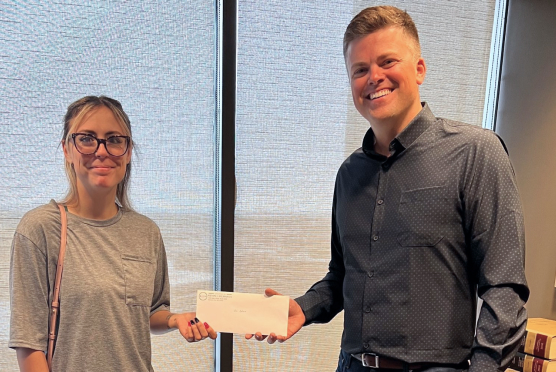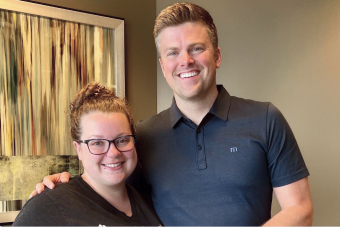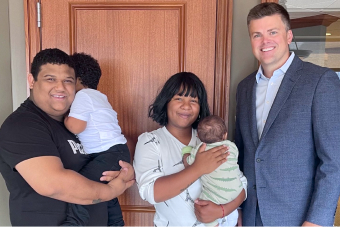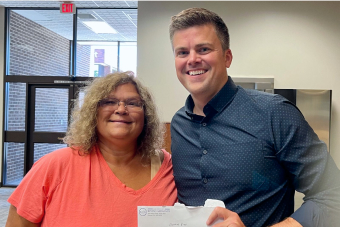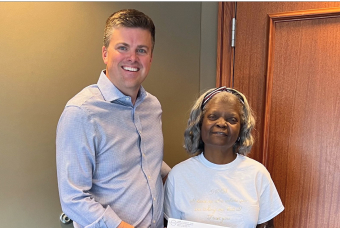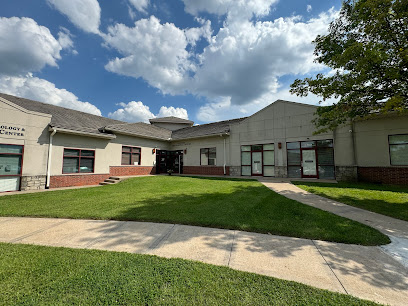A new analysis conducted by Kevin McManus Law revealed that the vast majority of today’s burn injuries stem from the same source: negligence.
Recent records revealed that the United States sees over 650,000 burn injuries per year, most of which occur in private residencies between May and August, and most of which involve men.
It’s our hope that by advertising our findings, we can promote increased awareness about the risk of burns people face in their own homes. Faulty wiring, older appliances, and damaged products can all lead to first, second, third, or fourth-degree burns – so let’s work together to stay on top of the most recent data about severe injuries.
If you want to limit your risk of burn injuries or successfully recover from a recent one, Kevin McManus Law can help.
Burn Risks in Your Home
Research recently conducted by Kevin McManus Law revealed that an estimated 75% of burn injuries occur in private residencies. These accidents usually stem from the improper use of home cleansers, wiring failures, or unsupervised access to uncontrolled flame.
The most common sources of burns tend to include the following:
- Fire flames
- Scalds
- Contact with hot objects
- Chemical exposure
- Electrical damage
Cooking tends to put the average person at risk for fire flames, scalds, and contact with hot objects. These conditions can also see homeowners fall victim to house fires, which can prove devastating physically and financially.
Unfortunately, children and infants tend to fall victim to scalds more often than adults. We recommend teaching children about fire safety at a young age and warning they risk coming into contact with hot pots, pans, or burners.
Limiting the Risk of Electrical Burns
Unfortunately, the older a house is, the more likely its wiring is no longer up to code. If a homeowner doesn’t make a point to have their wiring inspected and updated, they put themselves at a greater risk for electrical burns and house fires.
Likewise, older homes tend to come with older appliances, many of which may be faulty, damaged, and actively dangerous. It’s always in a new homeowner’s best interests to ask an inspector to look at their:
- Appliances
- Outlets
- Circuits
- Older devices
- Cords
It’s also in a homeowner’s best interest to avoid purchasing older or used space heaters or household appliances.
Limiting the Risk of Chemical Burns
Certain chemicals make fantastic cleaning aids while still putting you at risk for serious burns. When bleach, ammonia, and drain cleaners come into contact with unprotected skin, they can leave behind chemical burns that take a considerable amount of time to heal.
It’s always in your best interest to wear gloves or other protective gear when using these materials around your home. You should also warn your family or housemates that you intend to use these products so they can protect themselves from unnecessary burns.
Last but not least, you should make a point to prevent children from coming into contact with these substances, either accidentally or on purpose. If you can block off the room you’re cleaning or use these products when your child isn’t home, you can prevent an uncomfortable trip to the emergency room.
Limiting the Risk of Radiation Burns
Believe it or not, sunburn counts as a radiation burn. Prolonged exposure to ultraviolet rays (UV rays), like those produced by the sun, puts the average person at a higher risk for radiation burns and their long-term health effects, which can include the development of certain cancers.
However, microwaves can produce some of the same dangerous UV waves. The older or more damaged a microwave gets, the greater your risk of developing radiation burns becomes.
Limiting the Risk of Thermal Burns
Prolonged exposure to self-heating objects can cause thermal burns. Homeowners need to take a lot of care when interacting with:
- Stovetops, especially older models
- Electric fireplaces
- Electric candles or candle warmers
- Space heaters
- Flat irons, curling irons, and other hair tools
If an attempt to use any of these devices results in sparks from an outlet, unplug the device and wait for it to cool before handling it further. Likewise, if you spot smoke coming from one of these items, it’s always in your best interest to turn the device off and either dispose of it or call its manufacturer.
Complications from Burn Injuries
Fires and other dangerous conditions can force survivors to deal with more than straightforward burns. The more severe a burn is, the likelier it is that a survivor will develop scarring or discoloration in addition to psychological conditions like anxiety, depression, and/or post-traumatic stress disorder.
Medical professionals break burns and wounds down into four categories of severity. These include the following:
- First–degree burns: first-degree burns count as superficial burns and should not cause long-lasting pain. Your skin should be red and slightly shiny but should not impact your long-term mobility.
- Second–degree burns: second-degree burns tend to cause the impacted epidermis and dermis to swell and blister. You should expect these burns to be painful and have some impact on your overall mobility.
- Third–degree burns: third-degree burns do more than damage the epidermis and dermis. They destroy them and often require grafts to repair. These burns can impact the health of a person’s muscles and tendons but don’t regularly compromise a person’s bone structure. You should expect these burns to have a long-lasting impact on your mobility and health.
- Fourth–degree burns: fourth-degree burns are the most severe type of burn recognized by medical professionals. These burns destroy the epidermis, dermis, muscles, and tendons. They can also do significant damage to a survivor’s bones. Most people who endure fourth-degree burns permanently lose feeling in the impacted area and may also suffer from disfigurement or a total loss of mobility.
These burns tend to impact a person’s arms, hands, legs, trunk, and head more than any other part of a victim’s body. Severe accidents can see burns appear on multiple parts of a person’s body, putting the survivor at a greater risk for infection, joint and bone damage, organ damage, and other burn-related conditions.
Preventing Burns at Home
How can you take steps to prevent burn accidents at home? Kevin McManus Law’s best tips for burn prevention, first aid, and calling 911 include the following:
- Keep hot items out of the reach of children
- Ask children to remain out of a kitchen or high-risk area when hot items are in use
- Use safety equipment to limit your contact with hot surfaces, including oven mitts and potholders
- Ask professionals, including inspectors, to check your wiring and update your circuits accordingly
- Avoid overloading outlets or power strips
- Always unplug any electronics before performing general maintenance on them
- Remain in the room while using candle warmers, space heaters, and other electronic devices
You should also avoid smoking in bed or placing gasoline in dangerous or unventilated spots in your home.
If you find yourself dealing with serious burns after an accident, don’t wait to get emergency care. You should call 911 as soon as possible to connect with emergency responders. If it’s safe for you to do so, you can treat a burn at home by separating yourself from the heat source and running your burn under cold water.
We also recommend the use of lotion or aloe vera gel to treat painful or itching burns. If at all possible, avoid touching your burn as it heals by using bandages to cover it. You can also use an OTC pain reliever to minimize a burn’s impact on your ability to meet your everyday needs.
Freezer Burn, Frostbite, and Burn Treatments
Frostbite is a type of burn you can suffer if you’re exposed to the cold for too long. If you find yourself dealing with frostbite or freezer burn, do not try to treat the condition on your own. You should call 911 immediately and have emergency responders help you navigate your recovery.
A Statement from Kevin McManus Law
When asked to comment on this study’s findings, a spokesperson from Kevin McManus Law said, “The data is both alarming and enlightening. It’s shocking how many families can avoid dealing with the stress of a burn injury if the people in their communities make a point to look out for them.”
“We hope that increased education about the dangers of faulty appliances and common household chemicals can decrease the number of burn injuries seen across the United States. The more actionable steps we take to spread awareness about the increased risk of fires during the colder months, the safer our communities will be.”
Taking Action to Reduce and React to Burn Injuries
75% of burn injuries occur at home. Kevin McManus Law believes that increased awareness about the conditions that lead to house fires and burn injuries can reduce the number of emergency room trips that homeowners make on a yearly basis.
Our Kansas City personal injury lawyers hope that by sharing information about the dangers of hot surfaces, uninspected wiring, and dangerous appliances, you can prevent burn injuries in your home. If you suspect you may be at a higher-than-average fire risk, don’t wait to address dangerous conditions.
Should you find yourself dealing with the aftermath of a fire or burn injury that you know was someone else’s fault, don’t panic. You don’t have to fight to recover on your own. You can work with Kevin McManus Law to hold the right people responsible for your well-being.

